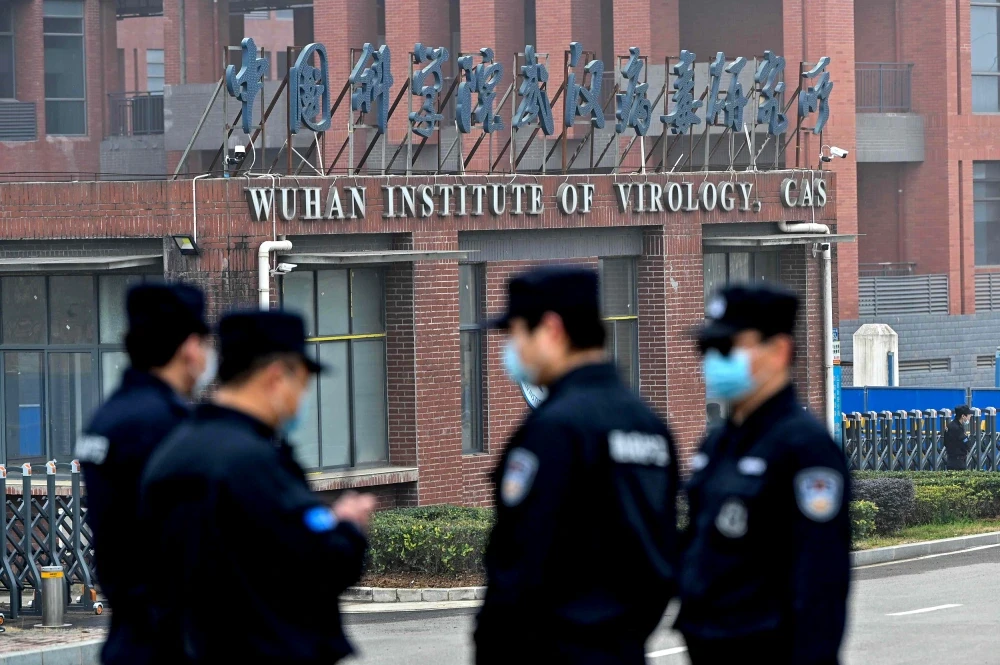How Ottoman Empire protected Easter celebrations in Jerusalem?
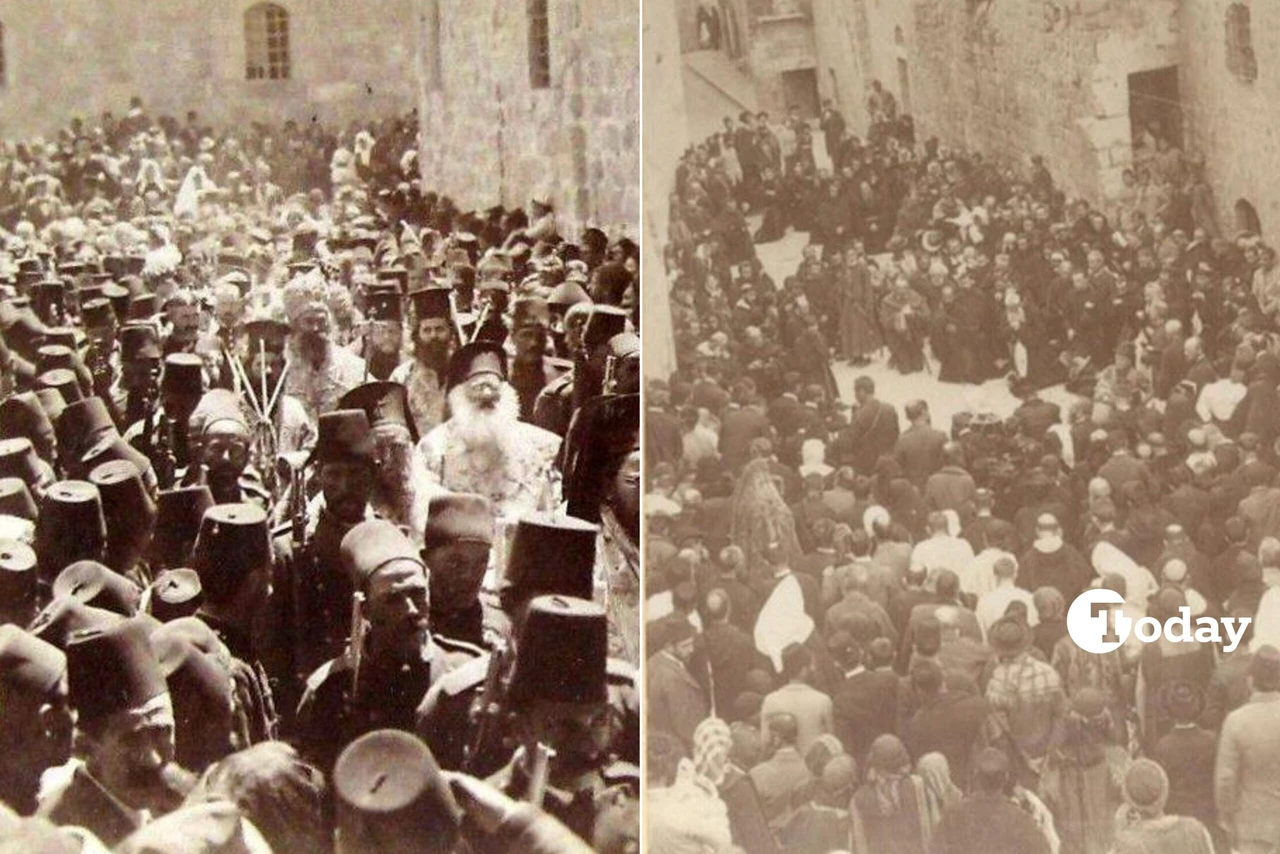 Easter procession of the Greek Church near the entrance of the Church of the Holy Sepulchre (L); Pilgrims on the Via Dolorosa (R), Jerusalem, Palestine, 1900. (Photos via Underwood & Underwood Archive)
Easter procession of the Greek Church near the entrance of the Church of the Holy Sepulchre (L); Pilgrims on the Via Dolorosa (R), Jerusalem, Palestine, 1900. (Photos via Underwood & Underwood Archive)
In the 19th century, as Christian pilgrims from across the globe journeyed to Jerusalem for Easter celebrations, the Ottoman Empire emerged not just as a political force but as a guardian of religious coexistence and ritual continuity in the sacred city.
Far from suppressing Christian customs, the Ottoman authorities took extensive measures to facilitate and safeguard Easter festivities, from logistical support to robust security protocols.

A covenant of protection: From Caliph Umar to the Ottoman sultans
The protection of non-Muslim religious practices in Jerusalem dates back to the seventh century. Following the Islamic conquest of the city in 638, Caliph Umar ibn al-Khattab issued a covenant that guaranteed Christian residents freedom of worship and safe access to holy sites like the Church of the Holy Sepulchre. The Ottomans, who gained control over Jerusalem in 1516 under Sultan Selim I, renewed this commitment by issuing firmans (royal decrees) reaffirming Christian rights.
These decrees were not merely symbolic. They spelled out the protection of pilgrimage routes, religious ceremonies, and sacred spaces. The fact that successive Ottoman sultans—from Mehmed II to Mahmud II—continued to issue similar orders highlights a deliberate policy of tolerance rooted in Islamic jurisprudence and statecraft.
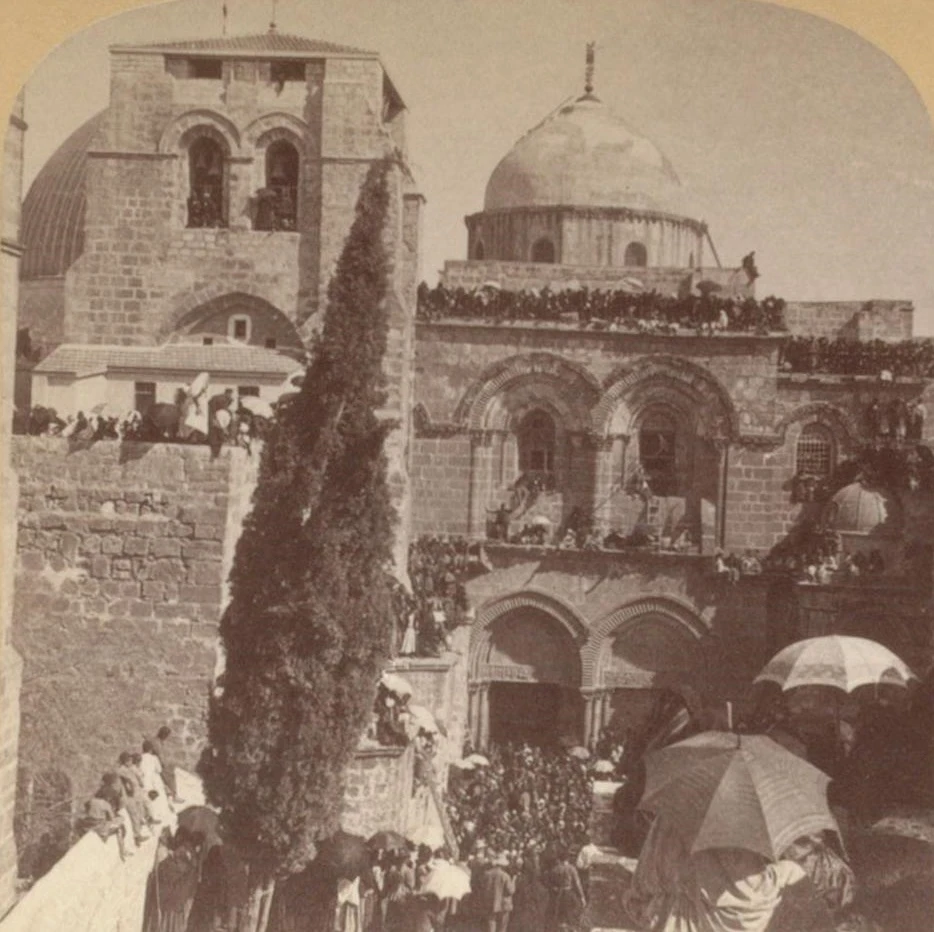
Why Easter in Jerusalem mattered so much
To Christians, Jerusalem is more than a historical city. It is the backdrop of Prophet Jesus’ (peace upon him) final days, crucifixion, and resurrection. Easter—the celebration of Christ’s resurrection—became deeply entwined with the city’s spiritual identity. The Church of the Holy Sepulchre, known in Ottoman documents as the Kamame Church, became the epicenter of global Christian pilgrimage.
Despite Muslims being the demographic majority, Christians held a significant cultural and spiritual presence in the city—especially during religious festivals. During Easter, the number of pilgrims surged. In 1904 alone, more than 12,000 pilgrims visited Jerusalem, including European aristocrats, diplomats, and clergy.
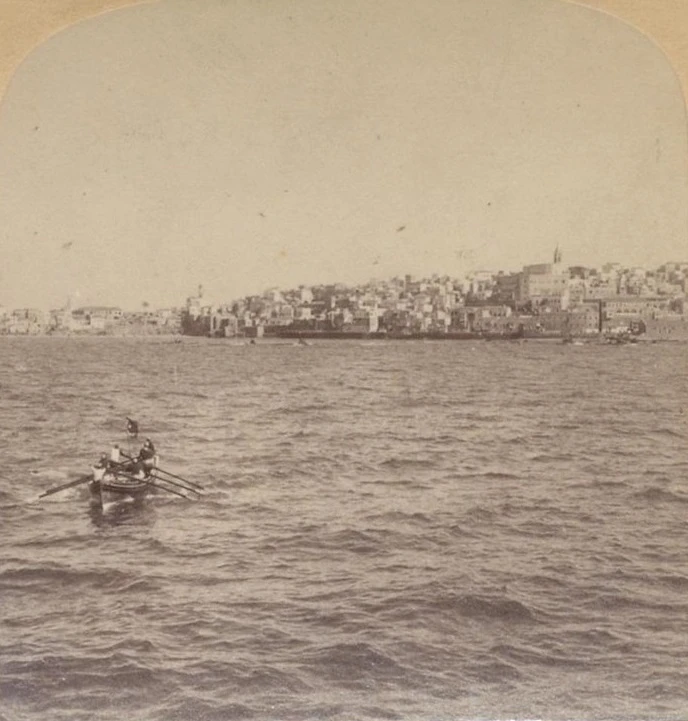
Logistics and hospitality: Empire’s seasonal transformation
With thousands descending upon Jerusalem each spring, the Ottomans implemented detailed policies to manage the seasonal influx. They relaxed passport checks for pilgrims arriving at ports like Jaffa and ensured no discrimination or harassment occurred along the travel routes.
Food provisions were increased to accommodate Christians celebrating Easter, Jews observing Passover, and Muslims attending Nebi Musa festivities—all of which coincided in the spring months. In 1852, with all three festivals occurring simultaneously, Governor Hafiz Ahmed Pasha proactively stockpiled food, earning public praise from both the Armenian and Greek Patriarchs.
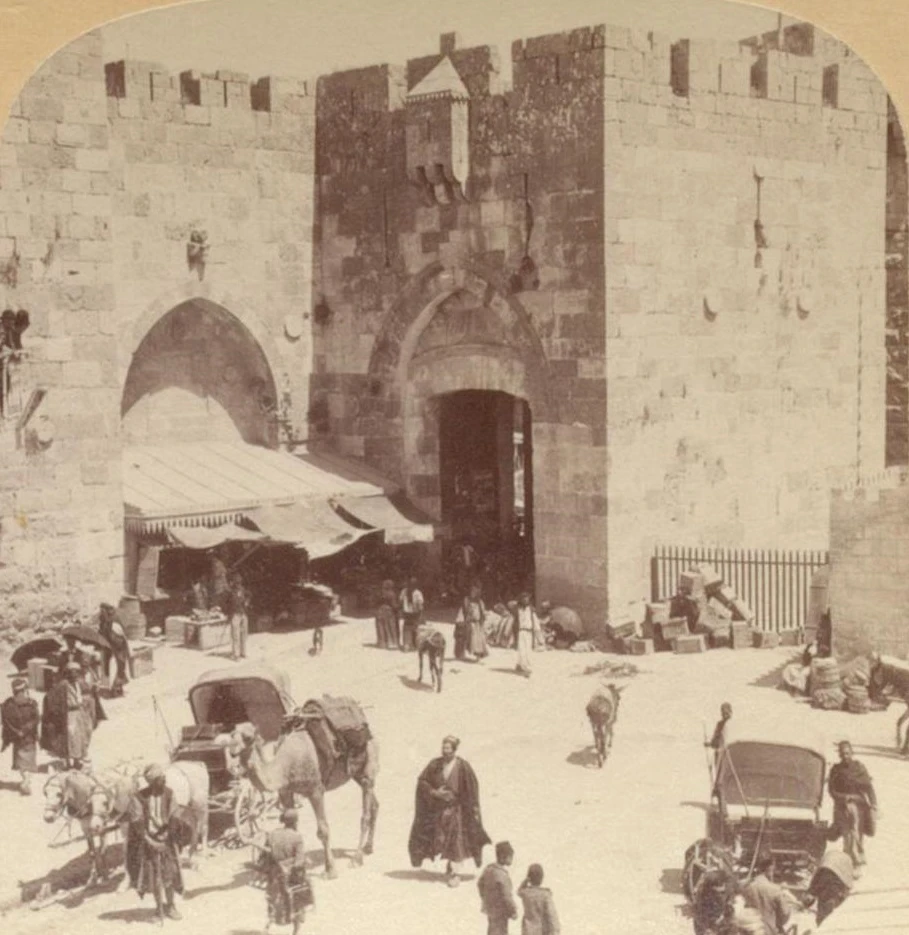
Clean cities, safe gatherings: Health and security measures
Health services, already stretched thin, were reinforced for the Easter season. The Ottomans sent additional doctors and sanitation workers to Jerusalem, while local hospitals—such as the one run by the Salahaddin Ayyubi Foundation—prepared for the medical needs of thousands of foreign visitors.
Security was another priority. The empire stationed additional troops in Jerusalem, especially during peak rituals like the Holy Fire ceremony inside the Church of the Holy Sepulchre. In years when Easter dates aligned across denominations, authorities sometimes deployed over 700 soldiers to manage crowds and prevent sectarian clashes.

Handling tensions and preventing provocations
Despite efforts, not all was peaceful. In regions like Mount Lebanon and Thrace, Easter celebrations had sparked violence in previous years. Aware of such risks, Ottoman officials monitored political agitators and reinforced bans on public displays of nationalism, such as waving foreign flags or using Easter as cover for anti-state protests.
Intelligence networks tracked potentially subversive actors. In 1897, the Ottoman administration intercepted attempts by Armenian nationalist figures to exploit the Easter season to rally support. Authorities responded with targeted surveillance and travel restrictions, balancing tolerance with precaution.

A remarkable record of gratitude
The Christian patriarchs of Jerusalem routinely sent letters of appreciation to Ottoman governors and even the Sultan himself. Their praise reflected the relative peace and freedom they enjoyed under Ottoman rule—something far from guaranteed in many parts of the world at the time.
Through legal continuity, logistical preparedness, and intelligence-driven security, the empire fostered an atmosphere where diverse faiths could commemorate their sacred traditions side by side.
As modern Jerusalem continues to grapple with religious and political tensions, the Ottoman model stands as a historical example of pluralism maintained not just through idealism but through practical governance.


